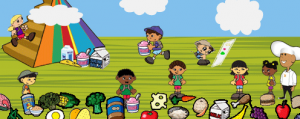 A great deal of mobile applications (58%1) is created for preschoolers. The New York Times even named an iPhone as a “toddler’s favorite toy”². Apps for kids are intended to entertain them, develop their reading, writing, hearing, visual and motor skills, improve their reaction, attention and memory. While babies and toddlers see only bright images, children aged 3 and older have also a passion to read. This is when app translation is important. Infants absorb information like sponges. They learn new words and memorize expressions to use with their peers. Many phrases stay in their minds for their entire life.
A great deal of mobile applications (58%1) is created for preschoolers. The New York Times even named an iPhone as a “toddler’s favorite toy”². Apps for kids are intended to entertain them, develop their reading, writing, hearing, visual and motor skills, improve their reaction, attention and memory. While babies and toddlers see only bright images, children aged 3 and older have also a passion to read. This is when app translation is important. Infants absorb information like sponges. They learn new words and memorize expressions to use with their peers. Many phrases stay in their minds for their entire life.
It’s important to mention that as an app provider you are fully responsible for its content. As you know, machine translation usually produces awkward word combinations, sometimes even offensive. Children may think they are funny and tell them to friends. This may result in speech degradation.
When translations are done by human professionals, it’s only for the better: children play and discover new things having fun and enlarging their vocabulary. Appropriately localized apps favors kids’ comprehensive education for the joy of their parents.
Localization of apps aimed at children deserves a special concern. Musical, math, spelling, drawing, matching, coloring, puzzle, game and other kinds of apps include text content that needs to be competently translated to foreign languages. As adults, our task is to take this aspect under our control and provide a safe environment for our kids.
1. http://www.joanganzcooneycenter.org/
2. http://www.nytimes.com/2010/10/17/fashion/17TODDLERS.html?_r=1&
ICanLocalize (http://www.
